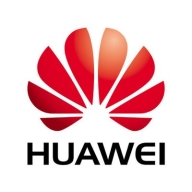

Splunk Observability Cloud and Huawei eSight compete in the infrastructure monitoring and observability space. Splunk appears to have the upper hand due to its broader capabilities and cloud infrastructure.
Features: Splunk Observability Cloud excels in real-time log analysis, data integration, and custom dashboards, providing end-to-end visibility and advanced application performance monitoring for cloud-native applications. Huawei eSight focuses on network monitoring and hardware alarms, offering strong integration with Huawei devices.
Room for Improvement: Splunk could lower costs, increase third-party integrations, and enhance microservice scaling information and AI-powered analytics. Huawei eSight needs better integration with non-Huawei devices, simplified licensing, and more robust automation features.
Ease of Deployment and Customer Service: Splunk supports diverse deployment models, including cloud-based, on-premises, and hybrid, with generally positive technical support reviews despite occasional delays. Huawei eSight is primarily on-premises, with responsive and helpful technical support.
Pricing and ROI: Splunk is costly, priced based on data volume, with users often justifying the expense due to extensive features and cloud integration. Huawei eSight offers competitive pricing for Huawei-compatible environments, with reasonable cost reports for its capabilities.
| Product | Market Share (%) |
|---|---|
| Splunk Observability Cloud | 1.8% |
| Huawei eSight | 0.9% |
| Other | 97.3% |


| Company Size | Count |
|---|---|
| Small Business | 5 |
| Midsize Enterprise | 4 |
| Large Enterprise | 1 |
| Company Size | Count |
|---|---|
| Small Business | 20 |
| Midsize Enterprise | 10 |
| Large Enterprise | 43 |
Huawei's eSight is a unified software suite for planning, operating, and maintaining complex enterprise ICT infrastructure from global, converged networks and data centers to multimedia and video communications that includes the facilities necessary for delivering performance and IT services. eSight provides a platform that supports infrastructure and devices from third-party providers, to develop custom management applications and improves O&M efficiency.
Splunk Observability Cloud offers sophisticated log searching, data integration, and customizable dashboards. With rapid deployment and ease of use, this cloud service enhances monitoring capabilities across IT infrastructures for comprehensive end-to-end visibility.
Focused on enhancing performance management and security, Splunk Observability Cloud supports environments through its data visualization and analysis tools. Users appreciate its robust application performance monitoring and troubleshooting insights. However, improvements in integrations, interface customization, scalability, and automation are needed. Users find value in its capabilities for infrastructure and network monitoring, as well as log analytics, albeit cost considerations and better documentation are desired. Enhancements in real-time monitoring and network protection are also noted as areas for development.
What are the key features?In industries, Splunk Observability Cloud is implemented for security management by analyzing logs from detection systems, offering real-time alerts and troubleshooting for cloud-native applications. It is leveraged for machine data analysis, improving infrastructure visibility and supporting network and application performance management efforts.
We monitor all IT Infrastructure Monitoring reviews to prevent fraudulent reviews and keep review quality high. We do not post reviews by company employees or direct competitors. We validate each review for authenticity via cross-reference with LinkedIn, and personal follow-up with the reviewer when necessary.